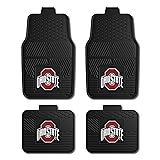All Categories
Python Data Analysis: Perform data collection, data processing, wrangling, visualization, and model building using Python, 3rd Edition
Share Tweet
*Price and Stocks may change without prior notice
*Packaging of actual item may differ from photo shown
- Electrical items MAY be 110 volts.
- 7 Day Return Policy
- All products are genuine and original








About Python Data Analysis: Perform Data Collection, Data
Product Description Understand data analysis pipelines using machine learning algorithms and techniques with this practical guideKey FeaturesPrepare and clean your data to use it for exploratory analysis, data manipulation, and data wranglingDiscover supervised, unsupervised, probabilistic, and Bayesian machine learning methodsGet to grips with graph processing and sentiment analysisBook DescriptionData analysis enables you to generate value from small and big data by discovering new patterns and trends, and Python is one of the most popular tools for analyzing a wide variety of data. With this book, you'll get up and running using Python for data analysis by exploring the different phases and methodologies used in data analysis and learning how to use modern libraries from the Python ecosystem to create efficient data pipelines.Starting with the essential statistical and data analysis fundamentals using Python, you'll perform complex data analysis and modeling, data manipulation, data cleaning, and data visualization using easy-to-follow examples. You'll then understand how to conduct time series analysis and signal processing using ARMA models. As you advance, you'll get to grips with smart processing and data analytics using machine learning algorithms such as regression, classification, Principal Component Analysis (PCA), and clustering. In the concluding chapters, you'll work on real-world examples to analyze textual and image data using natural language processing (NLP) and image analytics techniques, respectively. Finally, the book will demonstrate parallel computing using Dask.By the end of this data analysis book, you'll be equipped with the skills you need to prepare data for analysis and create meaningful data visualizations for forecasting values from data.What you will learnExplore data science and its various process modelsPerform data manipulation using NumPy and pandas for aggregating, cleaning, and handling missing valuesCreate interactive visualizations using Matplotlib, Seaborn, and BokehRetrieve, process, and store data in a wide range of formatsUnderstand data preprocessing and feature engineering using pandas and scikit-learnPerform time series analysis and signal processing using sunspot cycle dataAnalyze textual data and image data to perform advanced analysisGet up to speed with parallel computing using DaskWho this book is forThis book is for data analysts, business analysts, statisticians, and data scientists looking to learn how to use Python for data analysis. Students and academic faculties will also find this book useful for learning and teaching Python data analysis using a hands-on approach. A basic understanding of math and working knowledge of the Python programming language will help you get started with this book.Table of ContentsGetting Started with Python LibrariesNumPy and PandasStatisticsLinear AlgebraData VisualizationRetrieving, Processing, and Storing DataCleaning Messy DataSignal Processing and Time SeriesSupervised Learning – Regression AnalysisSupervised Learning – Classification TechniquesUnsupervised Learning – PCA and ClusteringAnalyzing Textual DataAnalyzing Image DataParallel Computing using Dask About the Author Avinash Navlani has over 8 years of experience working in data science and AI. Currently, he is working as a senior data scientist, improving products and services for customers by using advanced analytics, deploying big data analytical tools, creating and maintaining models, and onboarding compelling new datasets. Previously, he was a university lecturer, where he trained and educated people in data science subjects such as Python for analytics, data mining, machine learning, database management, and NoSQL. Avinash has been involved in research activities in data science and has been a keynote speaker at many conferences in India.Armando Fandango creates AI-empowered products by leveraging his expertise in deep learning, machine learning, distributed






















